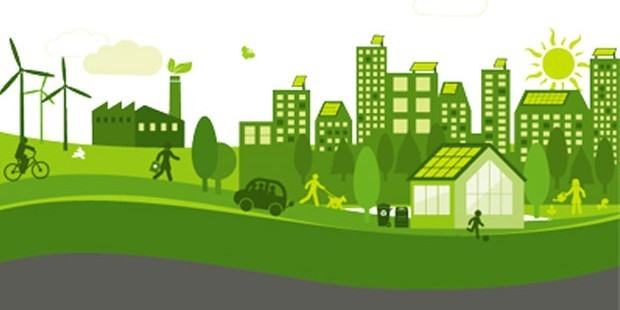An energy efficient home is far more than an eco-home with a compost toilet and a turf roof. By maximising your energy efficiency you can potentially save hundreds of pounds per year. You can also have a much nicer home; a home that is warm in the winter. So what is the Green Deal and how can it help to make your home more energy efficient? The Green Deal is a scheme devised by the government to help households pay for home improvements that can reduce energy bills. The idea is that instead of taking out a loan to pay for big home improvements such as installing double-glazing or a new energy efficient boiler, you pay for the improvements via savings made on your electricity bill. And if this sounds way too good to be true don’t worry because it really is a very good scheme; or at least it is for most households. |  |
A Green Deal for Everyone
Unlike some government sponsored schemes, the Green Deal is open to everyone. You don’t have to be on a low income to qualify for Green Deal grants. Anyone can apply for Green Deal money, although those on a low income will be eligible for extra assistance. The Green Deal is even available to tenants, the only caveat being that a tenant must get their landlord’s permission as the repayments are tied to the property rather than the tenant. You can also apply for Green Deal money if you have an electricity meter.
How the Green Deal Works
Borrowing money to pay for energy efficiency improvements via the Green Deal initiative is fairly straightforward. Unlike a regular loan, Green Deal repayments shouldn’t cost you any more per month than what you are currently paying out on bills. Because the Green Deal scheme is supposed to save you money on your energy bills, once the energy improvements have been made, your energy bills will be lower and therefore there will be no net increase in annual expenditure.
Repayments are the amount you are predicted to save on your bills, plus interest. The repayments are spread over a long period of time – between 10 and 25 years. The money is deducted directly from the electricity account, so if you move home, the debt stays with the property.
To apply for Greed Deal funding, you need to invite a Green Deal assessor to come and check out your home. This part of the process isn’t free, so make sure you shop around for one of the cheaper organisations. You should also check that whomever you invite is a member of the Greed Deal scheme. There may also be free assessment deals available in your area – so check before you pay for an assessment.
Eligible Home Improvements
There are lots of home improvements you can make with Green Deal funding:
- Double-glazing
- Loft insulation
- Replacement boiler
- Solar panels
- Cavity wall insulation
- Solid wall insulation
One important thing to note is the some of the more expensive home improvements will require a portion of the payment upfront. The reason for this being that the energy savings you are predicted to make will not cover the cost of the installation entirely. So do make sure you can afford to inject some cash into the deal before you apply for funding.
Once you have had your energy assessment done, you can shop around for the cheapest quote for the work. You are not obliged to have the work carried out by the company that did the Green Deal assessment, even if they imply you are. So don’t be ripped off – get at least three quotes before you sign on the dotted line.
Here are some useful links for more information on Green Deal;
- https://www.gov.uk/green-deal-energy-saving-measures/overview
- http://www.greendeal.co.uk
- http://www.greenenergyadvisor.co.uk

